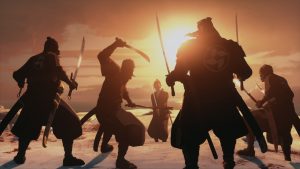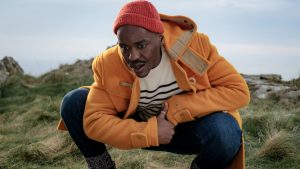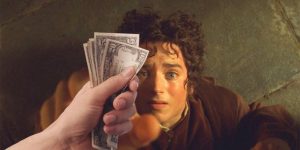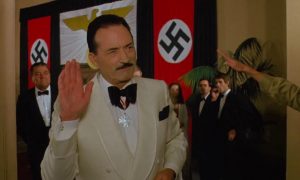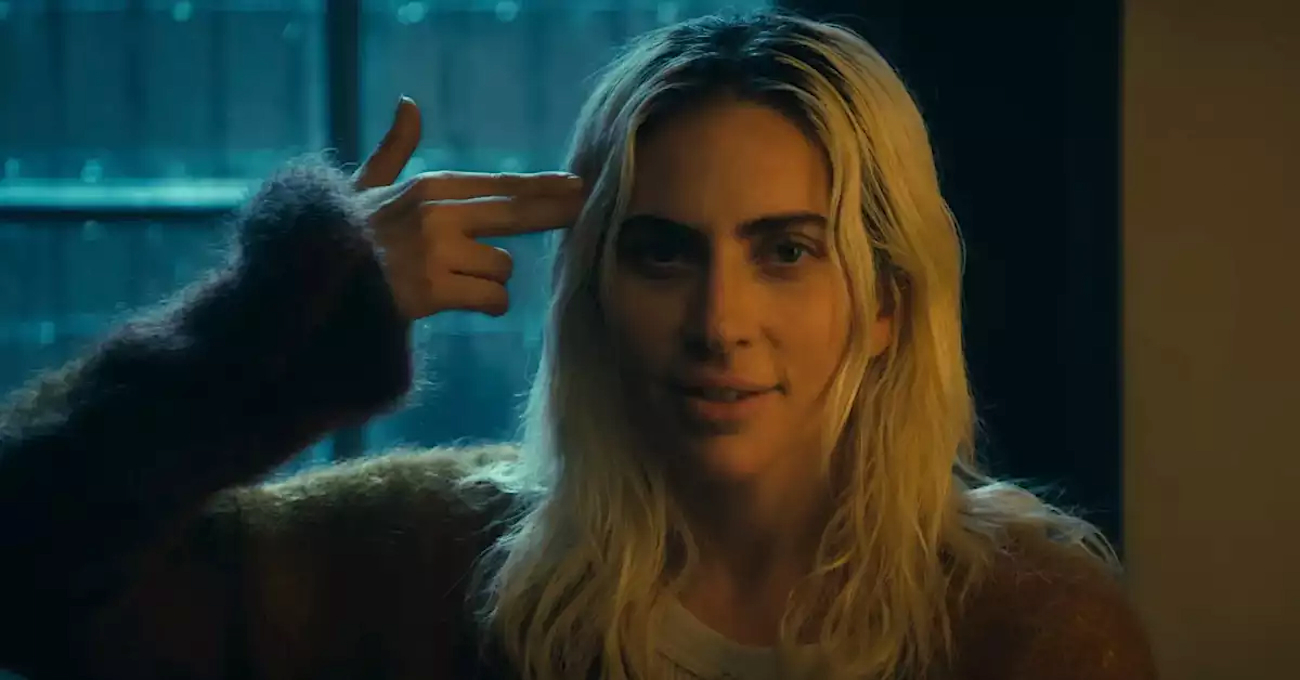
This article contains spoilers for Joker: Folie à Deux.
When Joker: Folie à Deux ends, the world has changed. Although likely not in the way comic book fans expected.
Arthur Fleck, the man who smeared pancake makeup across his face and called himself Joker, is dead; Lee Quinzel, his precious “Harley Quinn,” has left him cold after realizing he wasn’t the leader of a nihilist revolution but instead a pitiful loser; and even Harvey Dent seemed to evade his comic book fate when after an explosion rocks the trial of the century in Gotham’s courthouse… the D.A. seems only dazed and slightly banged up.
This isn’t the way any of that was supposed to go down, at least if you are familiar with the comic books and the litany of film, television, and video game adaptations they’ve previously spawned. While the first Joker movie ended in a way which seemed to suggest Joaquin Phoenix‘s Arthur could become the Batman’s greatest foe, with even the origin of this version of Gotham’s Dark Knight told in deep shadows as we see Joker’s populist anarchy inspire the murder of fat cats Thomas and Martha Wayne, Joker 2 leaves no confusion about its intent. All that jazz is kids’ stuff meant to entertain children and delude saps like Arthur Fleck.
Sure, “Joker” can fantasize about committing a Joker-esque escape where he assaults Dent and beats the judge to death with a gavel. But when the real escape comes because of a fanboy’s car bomb outside, Arthur is as confused and frightened as anyone else. He literally runs in terror from the sycophants who would crown him the Clown Prince of Crime. He rejects the mantle, preferring to seek out Harley Quinn in a spot where he’d be easily spotted, arrested, and sent back to Arkham. Once back “home,” another mentally unwell fan can then gut him like a fish.
It should be noted that Arthur’s murderer also begins carving his own face with the same blade he uses to send Fleck to oblivion. In another film or television series, one might even extrapolate that the murderer will become the real Joker, a la Heath Ledger and his famous self-applied scars in The Dark Knight. He killed the king and assumed the throne.
But to believe such things is to chase a misnomer as mendacious and untrustworthy as Lee’s lies about her home life, or any other fantasy that allowed Arthur to pretend he is anything other than what his reality confirms: a tragic and sympathetic victim of society’s failures—as well as the star of a movie everyone misunderstood as some kind of statement about the goodness of violence and misanthropy. In the end, Joker: Folie à Deux is also a grand statement, you see, about how most of y’all didn’t get it the last time.
That’s well and good, but it raises the question of why make either of these as Joker movies in the first place?
That is a query which occurred to me more than once in the run-up to Joker 2. Consider back in August when Phillips was already preparing fans for a radical departure. At the time he told the press, “We removed everything [about Harley Quinn], the high-pitched voice, the accent, the bubblegum, and all that bold stuff from the comics. We wanted the character to fit in this world of Gotham that we created with the first movie.” When this quote first appeared, I pondered would it even then be Harley Quinn?
After seeing the film, the answer is elusive. The Harley Quinn of Joker 2 has more in common with the followers of Charles Manson who would show up to his trial in 1970 and put on a show for the press, literally singing “we won’t talk to you except through music.” It didn’t help save Charlie like they thought, but it gave them fleeting moments of attention—sparks for a flame of revolution that never came. Gaga’s Lee Quinzel is much the same, to the point where she seems to be outright manipulating and exploiting Arthur Fleck, encouraging him to sink his legal defense and put on a show as “Joker.”
When he actually is free, however, she wants nothing to do with the bum.
In theory, it’s an interesting concept for a drama, and maybe even a way to interrogate our own modern times where messages, or entire lives no matter how tragic and disturbed, are repackaged and synthesized into fodder and “content” for a celebrity- and fame-obsessed culture. If set today, instead of a TV movie, Arthur would get an eight-part Ryan Murphy series with all the incestuous bits spelled out. Still, the question remains, why make a movie about that subject matter with Joker and Harley Quinn when it requires neither character to resemble almost anything to do with Joker and Harley Quinn?
That becomes perplexing and murky territory when dealing with any pre-existing story or “intellectual property,” and which seems to set Joker 2 at the most extreme pole. For the record, I love when artists challenge preconceived notions of what a story or character can be and attempt to extrapolate something new or innovative to say about the subject matter.
Many of the most interesting superhero-adjacent films of the last 15 years have been those that got out of the rut of cookie-cutter formulas and algorithm-like storytelling. Christopher Nolan more than set the stage for Phillips’ Joker films when, among the many artistic risks he gambled, he turned the Joker into a human personification of every boogeyman who terrifies Americans in the 21st century. He was the terrorist, the lone-shooter, the non-state actor who “just wants to watch the world burn.” It posthumously won Heath Ledger an Oscar before Joaquin Phoenix got a little gold man for ostensibly the same role, and was beloved by fans.
Ledger’s Joker was stripped down as well, losing the “permawhite” skin dye that fans bickered so ceaselessly about before The Dark Knight’s release. Instead he looked like Johnny Rotten after a three-week bender in greasy pancake makeup he forgot to take off. Still, the characterization got at the root of why the character might be so appealing, and indeed terrifying, just as Nolan’s Batman could be seen as a stripped down distillation of what allows the character endure.
The same might be applied to Matt Reeves’ own take on the Batman, which further demythologizes the concept until he’s just a weirdo in riot gear and emo guyliner, standing in front of a souped up muscle car. Both filmmakers attempt to heighten or “elevate” the material, but in both cases it is artists using that conceit to translate into the cinematic vernacular what it is about the characters that make them so iconic on the comic book page.
In James Mangold’s Logan, that becomes a literal dialogue, with Hugh Jackman’s gray and world-weary Wolverine despising the actual comic book panels idolized by his daughter (Dafne Keen). He is not the guy in the yellow spandex in that movie, but he is still an echo of it when he dies protecting the child.
Phillips’ Joker ostensibly started from a similar, if more ambitious, place. He likewise wanted to ground an iconic comic book character in a steep sense of reality and verisimilitude, but he also sought to move beyond even the action-movie trappings of a Dark Knight or Logan. In fact, the original Joker wears its influences on its sleeve with the movie not so subtly acting as a quasi-remake of Martin Scorsese’s Taxi Driver and The King of Comedy. Yet it still allegedly offered another window into how such a character might exist.
But then comes Joker: Folie à Deux. Five years after the fact, the sequel intriguingly acts as a pseudo-confession. According to the new film, it was never about adapting the comics, and to think so makes you as deluded as poor Arthur Fleck, a fool who believes there’s a future for himself and Lee.
Arthur, indeed, has fantasies about escaping the courtroom in a musical act of bloodshed and then “building a mountain” with Lee and a child. But in the end she seems to suggest she lied about being pregnant, along with everything else. There is no future where they are either settled down or enacting a Joker or Harley crime spree. He is a sick man that society would rather eradicate than cure, as indicated by the fact that he is likely about to be sentenced to death for his crimes… before he is helplessly killed by another fanboy first.
While I enjoyed the first movie well enough, the sequel recontextualizes it into what it might have always been: a Trojan horse drama that could only get the kind of budget necessary to do a gritty 1980s NYC period piece by dressing up in IP. The movie was Phillips’ flawed, but fitfully interesting, love letter to Scorsese films of the 1970s and ‘80s, and he used the Joker character as a vehicle to a wide audience and a major studio’s resources.
On the one hand, that is almost commendable. It even got a wide breadth of global audiences to see a character study and think they got a comic book movie. But that approach has led to tangible self-loathing in Joker 2, a film which seems to hold contempt for many of its fans who took what the filmmaker strongly suggests is the “wrong message” from the last flick.
Ironically, this approach also makes Joker 2 a chore to watch as well. It’s an endlessly self-satisfied commentary only about itself. It’s watching a clown talk to himself in the mirror. The experience reveals an interesting distinction between movies which seek to “elevate” comic book material—The Batman, Logan, The Dark Knight—and movies that arrive at this elevated place to look down on the source material it used as a stepping stool.
It reveals an artistic utilitarianism on Phillips’ part but also the suffocating nature of a modern media landscape dominated by intellectual property. In the actual 1970s, if you wanted to deconstruct a Western, you just made it. You could even use famous personas like Doc Holiday or Billy the Kid. But today if you want to deconstruct a genre, you need to almost deceive the audience that they’re watching something they are not. Joker 2’s admission of the trick is artistically courageous, but it gives the whole enterprise an air of exhausting pretension.
Joker: Folie à Deux is in theaters now.
The post Joker 2 Is a Comic Book Movie That Hates Comic Books appeared first on Den of Geek.


